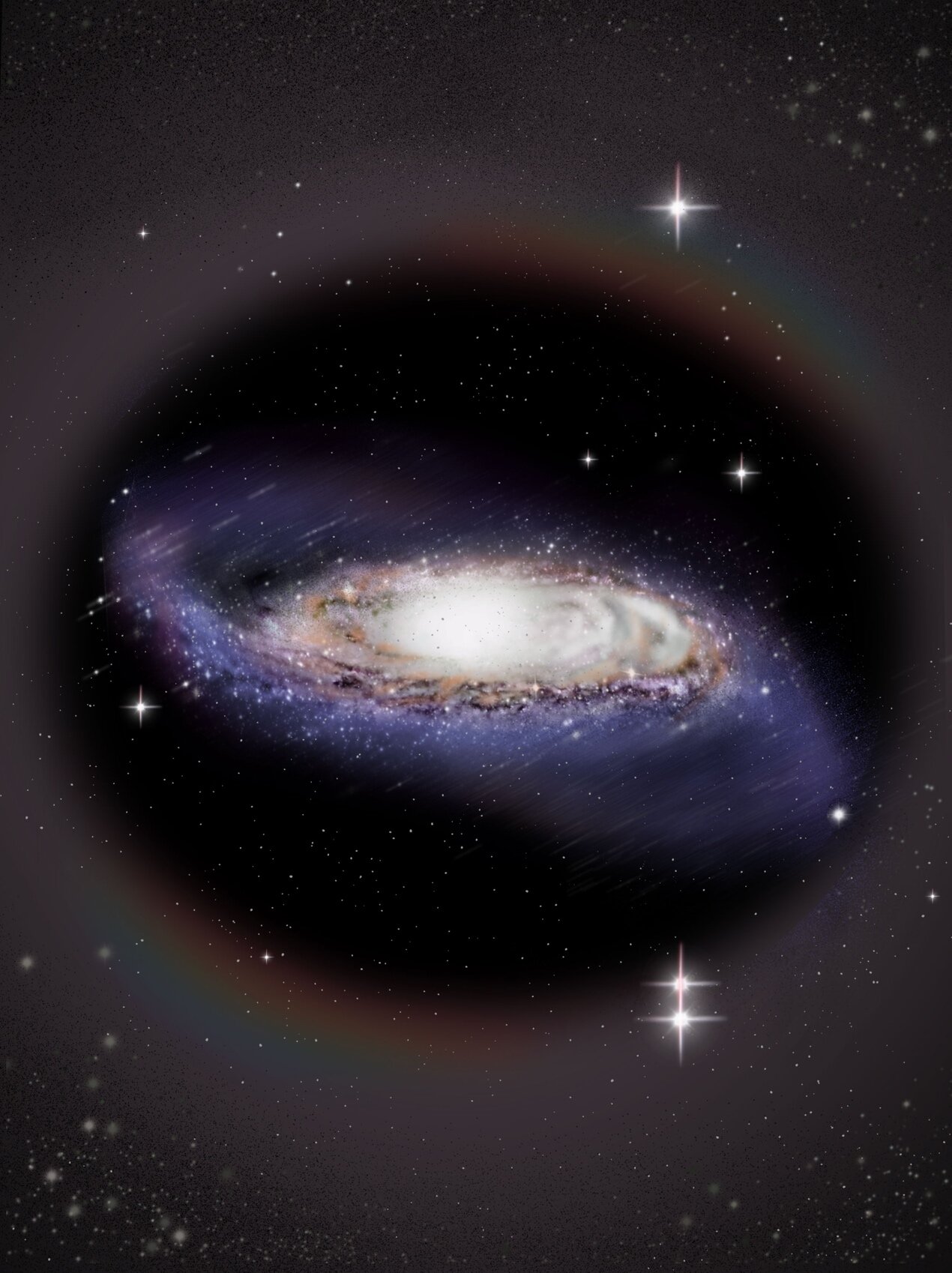In this artist’s impression, the galactic disk warp “dances gracefully” under the torsion of the dark matter halo. Credit: Hou Kaiyuan and Dong Zhanxun of the School of Design, Shanghai Jiao Tong University
An international team has developed a “motion-picture” method to measure the precession rate of the Milky Way’s disk curvature. Using a sample of Cepheid variable stars of different ages, this method makes it possible to clearly observe the direction and rate of precession of the Milky Way’s curvature.
Based on these measurements, the research team revealed that the Milky Way’s current dark matter halo is slightly flattened. The resulting paper, “A slightly flattened dark matter halo revealed by a retrograde precessing galactic disk warp,” is published in Nature Astronomy.
In the nearby universe, almost a third of disk galaxies are not perfect disks, but exhibit a warped shape that resembles a potato chip. Astronomers call this phenomenon disk warping. The Milky Way, as a typical disk galaxy, also has this warping property.
This tilted, rotating galactic disk, resembling a spinning top, inevitably precesses due to the torque exerted by the surrounding dark matter halo. However, the measurement of this key dynamical parameter, both in direction and speed, is highly controversial.
This is because previous measurements were based on indirect kinematic methods, where the tracers used are subject to dynamic disturbances or heating effects, severely limiting their accuracy and precision.
This study used 2,600 classical Cepheid variable stars discovered by Gaia as tracers, along with precise distance and age data from both Gaia and LAMOST. Using this sample, the researchers applied the “motion-picture” method to construct the three-dimensional structure of the Milky Way’s disk across populations of different ages.
By ‘watching’ how the disk’s curvature evolves with age, this study found that the curvature precesses in a retrograde direction at a rate of 2 km/s/kpc (or 0.12 degrees per million years).
Further detailed measurements show that the precession rate decreases with radial distance. This indicates that the current dark matter halo surrounding the warp is somewhat flattened, with a flattening value q between 0.84 and 0.96.
This measurement provides a crucial anchor point for the study of the evolution of the dark matter halo in the Milky Way.
More information:
Yang Huang et al, A slightly flattened dark matter halo revealed by a retrograde precessing galactic disk warping, Nature Astronomy (2024). DOI: 10.1038/s41550-024-02309-5
Provided by Peking University
Quote: ‘Motion-picture’ method reveals shape of Milky Way’s dark matter halo (2024, July 1) Retrieved July 1, 2024, from https://phys.org/news/2024-07-motion-picture-method-reveals-milky.html
This document is subject to copyright. Except for fair dealing for private study or research, no part may be reproduced without written permission. The contents are supplied for information purposes only.
